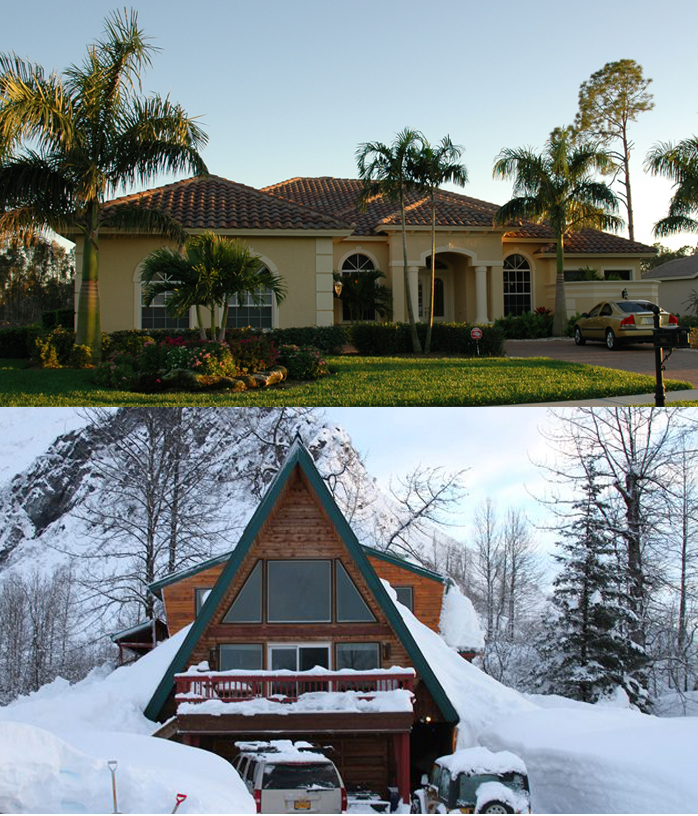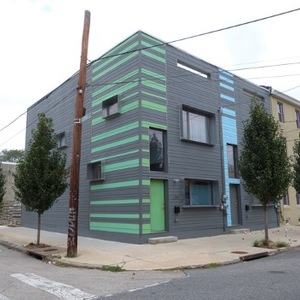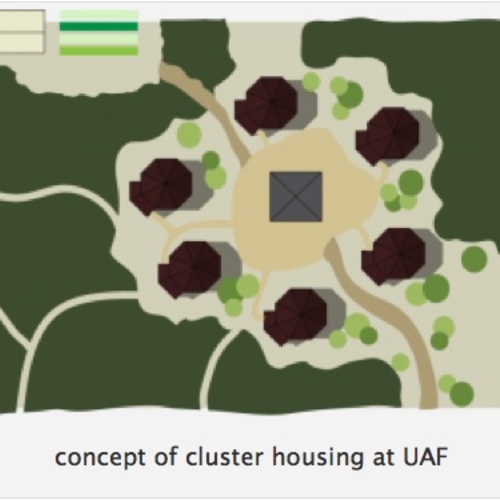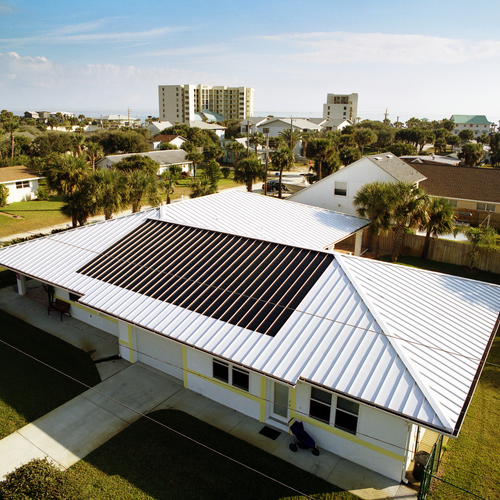
Image Credit: Image #1: Top photo, Jason DeHaan; bottom photo, AAFP.org
If you go to one of the many web sites that sell house plans, you can use filtering software to sort through hundreds of available plans by a variety of criteria: square feet, number of bedrooms, number of bathrooms, number of stories, or even “number of garage bays.”
On most of these sites, however, you can’t sort by climate zone. Why? Because most house plan companies ignore climate. They’re happy to sell customers in Minnesota the same house plan that they sell customers in Florida.
Although these plan companies may not realize it, climate matters. Among the climate factors that can affect house design are maximum temperature, minimum temperature, insolation, rainfall, snowfall, and average wind speed.
Because these factors vary, a wall assembly that works well in Florida may fail quickly in Minnesota. Mulling this idea recently, I decided to try to list all of the different ways that climate can affect a home. I quickly realized that this is a big topic.
Climate affects almost every aspect of a home
Why are hot-climate houses different from cold-climate houses? Why are desert houses different from rain forest houses?
Site and orientation. In a cold climate, a south-facing slope (the best orientation for winter sunlight) is highly desirable. In a hot climate, however, a south-facing slope may not be the first lot to be snapped up.
Foundation depth. The footings of most foundations are placed below the maximum frost depth. In Florida, a slab on grade makes a perfectly good foundation. In Minnesota, however, most homes have foundations that begin at least 4 or 5 feet below grade.
Shape. In a cold climate with high heating loads, a compact shape makes the most sense. The idea is to minimize the surface-to-volume ratio. For single-family homes, the usual result is the two-story…
Weekly Newsletter
Get building science and energy efficiency advice, plus special offers, in your inbox.

This article is only available to GBA Prime Members
Sign up for a free trial and get instant access to this article as well as GBA’s complete library of premium articles and construction details.
Start Free TrialAlready a member? Log in















12 Comments
Fantastic topic
For what else is architecture, but the design of a structure for a specific purpose in a particular place?
As well as Martin's exhaustive list of the interactions between building and climate, perhaps I could suggest another approach: Looking at the way the occupants wish to relate to their site in different climates. How can buildings further these interactions with our surroundings?
In temperate climates like the PNW, people can use outdoor spaces year round - as long as they provide cover from the rain. In areas with more extreme swings, like those experienced in most of the rest of Canada, buildings can be designed to open to their surroundings like flowers when conditions allow. Think of the wonderful street patios that spread from the front of cafes in Montreal during the summer.
Traditional vernacular architecture is all about responding to local climate to allow local culture to flourish. Courtyard houses, village squares with sheltering arcades - appropriate examples are out there for everywhere we have lived. It's only recently, to the detriment of both our buildings and our culture that we began to ignore them and build what we think of as universal solutions that ignore their surroundings.
Response to Malcolm Taylor
Malcolm,
The topic you raise -- how a house should interact with the outdoors -- is a huge topic, and one beloved by architects. The modernist homes of the 1950s with floor-to-ceiling glass -- the ones that attempted "to remove the wall between the indoors and the outdoors" -- were often ill-conceived disasters, as I'm sure you realize.
Sometimes we want our homes to be comforting and snug -- refuges from the outdoors. And sometimes we feel like flinging open every window in the house, inviting the delicious outdoor air indoors.
For those of us who live in snowy climates, a trip to the tropics, where windows often lack glass, is liberating and exciting. It opens the eyes to a new understanding of what a building can be.
Again, climate rules. Like you, I enjoy the sidewalk cafes of Montreal in July. But I remember the first time I crossed the Champlain Bridge from the south in February, when huge chunks of ice were floating on the St. Lawrence River, and the bitter wind was blowing snow sideways. Once I parked my car, I had no interest in locating a park bench or a sidewalk cafe. All I wanted was to avoid hypothermia on the walk to a heated building.
Those of us who live in a cold climate have less of an interest in mixing up the outdoor environment and the indoor environment than those who live in a mild climate. I love the outdoors. When I want to go there, I go there. But usually, I don't want to invite the outdoors indoors. Indoors is different.
Light
Climate has a profound effect on the way we should introduce light into buildings. Again to use an example from an area I am familiar with, the perennially overcast skies of the PNW mean there is very little difference in how light introduced on the south or other orientations of a building is experienced. Following the good practices Martin has referred to also means large overhangs in that region, and if you accept the premise of my previous post that its temperate climate makes covered outdoor areas useful, then you can use these facts to inform how you should design there.
So to bring the diffuse PNW light deep into houses, you need to keep the covered outdoor areas on the elevations where they will block the least amount of light into living areas. Introducing light above the overhangs and low roofs by clerestory windows or monitors can also be very effective.
This is a climate specific response that would be very different than you would want in southern, sunny regions, or to take Martin's point, those with harsh winters where you want the house to shelter the occupants against cold and snow, not rain.
Models from the past
The best lessons for green builders in any climatic region come from the study of local building traditions from before the time of cheap energy and cheap transportation. Whether you're looking at materials, labor, embodied energy or operating energy, vernacular builders were on the whole extremely resource efficient because they had to be.
Response to James Morgan
James,
I wish your rule always worked -- but it doesn't. Here in Vermont, walls had zero insulation in the old days, and attics had either very little insulation or no insulation. These vernacular buildings could have been better.
Response to Martin
Having spent a winter in a nineteenth century Minnesota cottage in which a few layers of newspaper passed for attic insulation I know exactly what you mean. However, had better insulating materials been available they would certainly have used them, and even absent that protection, due to the wood-framed, low thermal mass construction the living rooms of the home could be quickly brought up to comfort temperature with a relatively crude wood burning stove fueled with amply available renewable local biomass.
But please, I'm not suggesting for one moment that we omit efficient insulation, air sealing and mechanical systems in new homes today. I'm rather suggesting that the formal and constructional attributes of traditional buildings give us a clue as to the basic forms and materials in which those systems can be most effective. You cite particular attributes of climate-specific form such as roof pitch and overhang - I'm suggesting that we can read these specifics, and much much more, from intelligent observation of thos buildings around us which date from before the time we learned we could compensate for any foolishness and deficiency in design by throwing more product, more energy, more stuff at it. In my own vicinity for example I've noted that despite ample supplies of good building stone and excellent clay for brickmaking, high mass masonry buildings are almost unknown before the 1940's outside the downtown commercial fire districts. There are good climatic reasons why low thermal mass residential structures have been preferred here continuously since before the colonial period. In the desert southwest a different story would be told. Buildings of the past have many things to say to us, including much about resource efficiency and what we now call 'green building'. We should listen, and pay attention.
A Shelter Sketchbook
A great book to reference on specific building architecture responding to various climates is John S. Taylor's 'A Shelter Sketchbook' (Chelsea Green Publishing). It is wonderfully illustrated with examples of how traditional architectural styles responded to various climates. At lectures I give, I like to point out that classic architectural styles were developed as solutions to many things, primarily to climate, over generations of trial and error.
All of this was very important prior to WWII, when the ability to control mechanical systems was limited and energy was extremely expensive. After WWII, there was a period that we thought we could rule over nature with mechanical systems. This spawned the 'International Style', which was supposed to work anywhere in the World. Thankfully, we are now able to see again how architectural climatic design is the starting point for sustainable design.
Do exceptions prove the rules?
Martin,
Your sensible observations are obvious to those who study and practice building science, but boy are there exceptions. Here in Santa Fe, NM we are considered part of the "desert Southwest" and are correctly classified by the EPA as CZ 5B. The "B" being as important as the 5. But in an hour's drive of here we can be in CZ 4B or 6B. Within two hours we can be in 3B or 7B. Sensibly, our state energy codes are based on the particulars of every city, town, and village and take into account altitude as much as latitude.
As to the vernacular, thick earthen walls with flat roofs were a function of available materials and tools and a relatively primitive culture that made do with what they had. It was no accident that early adobe walls were often double and triple thick. Single wall adobe (10" wide) were reserved for barns and ignorant Anglos who sought to mimic the style on the cheap.
As soon as the railroads made it to Northern New Mexico with dimensional lumber and corrugated roofing, the practical Hispanic Nortenos covered their flat roofs with steeply pitched metal roofs and generous overhangs. Many of those homes still show flat laid Vigas on the ceilings with cold attics above.
Sadly, the slaves to vernacular have created restrictive covenants in many Santa Fe neighborhoods which mandate the goofiness of flat roofs with perimeter parapets that poorly funnel water through 12" openings called canales. Needles to say, roofing contractors stay pretty busy with the constant repair.
If reason ruled our codes, we would not build flat roofs north of Albuquerque, we would not blow foam insulation on the outside of adobe walls (which traps moisture and melts them) and we would have solstice-driven overhangs on every south-facing window. (Sigh...) Time for a new vernacular!
Kim
Oh those "ignorant Anglo" cheap mimickers. When will they learn to listen to "the practical Hispanic Nortenos"?
Response to Kim Shanahan and Malcolm Taylor
Kim and Malcolm,
I have no interest in a debate over the relative ignorance and practicality of Anglos vs. Hispanics. Most web forum moderators soon realize that every human being on the planet has the opportunity to draw on various aspects of our personalities: when we all choose to access our practical side rather than our ignorant side, we can allow our inner brilliance to overcome our inherent human ignorance.
Moving on: You're right, Kim, that sloped roofs and adequate roof overhangs are important details.
A closely related idea: area and angle for solar PV capture
I know that the area and angle for sufficient solar PV capture isn't exactly climate related but it's a site-specific factor that should be informing and creating house designs. 3 of your top 5 criteria should actually be influenced by solar PV capture concerns: how much roof area is needed, at what orientation, and at what pitch.
I've been musing lately that if we designed from first principles (such as what you mention above) including everything we know now about building science and the current pricing of PV, that a new vernacular would begin to arise.
Here in Sonoma County, CA roofs could be varied but with large areas to south and west (PG&E wants your late afternoon watts), with generous overhangs all around to manage rain, buildings would be single story to better manage earthquake, with plenty of shade to the west, and grape vines up high on the south and west sides (clear in spring, shady in fall, also beautiful and delicious), with carports for rainy days, and 5' high rat-slabbed crawlspaces to avoid moisture problems but also to store wine and apples, etc.
Response to Christopher Peck
Christopher,
You've made some excellent points. Designers of new homes certainly need to include a generously sized south-facing or west-facing roof that is free of dormers, skylights, valleys, chimneys, or vent pipes -- unless the site is shaded by a tall neighboring building or tall trees that can't be removed.
In climates where the electrical load is dominated by air conditioning, it makes sense for this roof to face west or southwest. In colder climates, this roof should definitely face south.
Log in or become a member to post a comment.
Sign up Log in